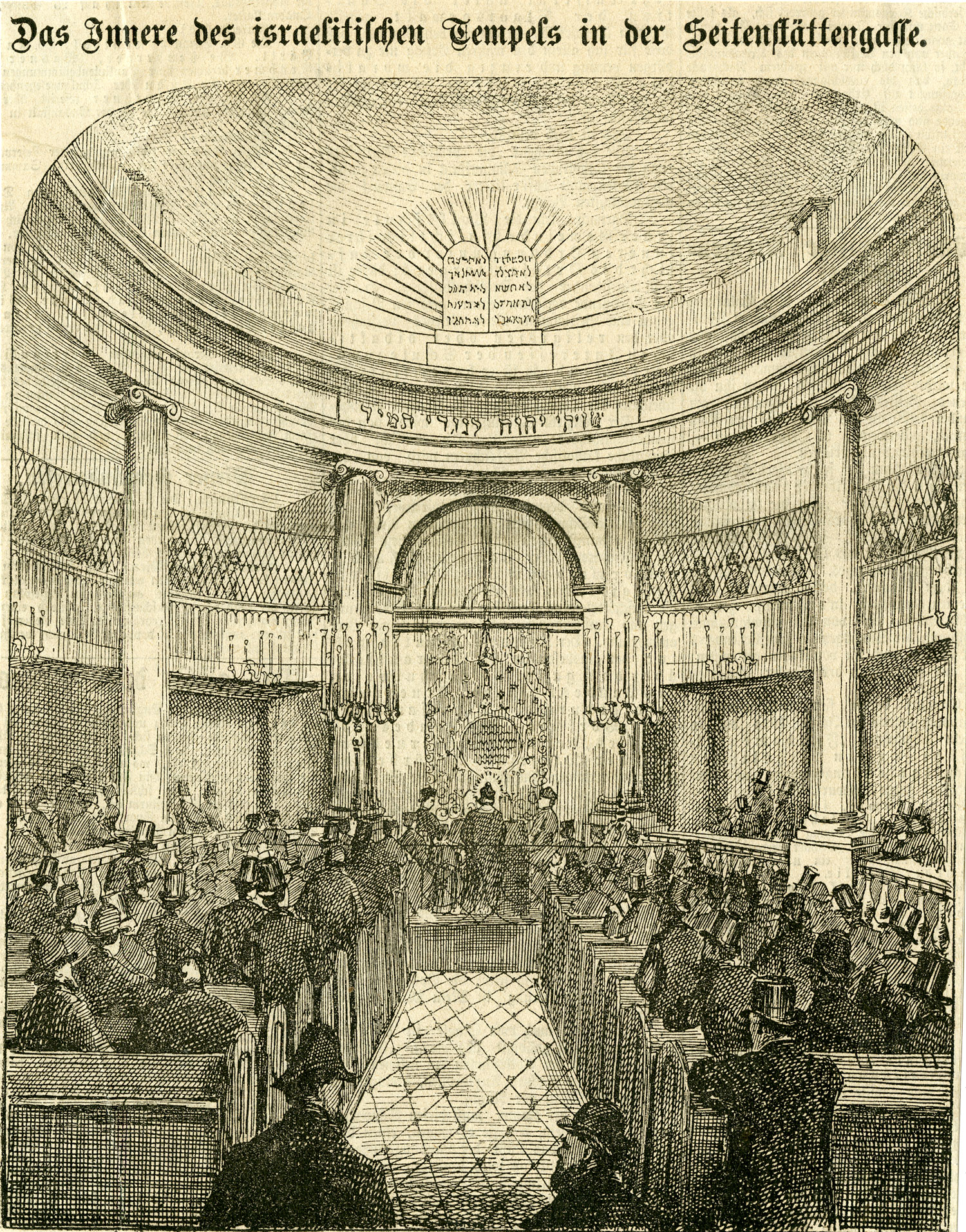The Stadttempel, located at Seitenstettengasse 4 in Vienna, Austria, was designed by Joseph Kornhäusel (1782–1860) and erected between 1824 and 1826. This wood engraving shows the synagogue as it appeared on the occasion of its 50th anniversary in 1876. Kornhäusel’s experience building theaters is evident in his innovative design in the popular Neoclassical style. The sanctuary is oval, with 12 tall Ionic columns around the perimeter, supporting a two-level women’s gallery. In the manner of the new Reform movement, a central aisle leads to the combined bimah and ark at the eastern wall. This is the first time this shape was used in a synagogue, though an oval women’s gallery was added to the Scuola Grande Tedescha (German Synagogue) in Venice in the 18th century. Though wooden vaulted ceilings were common in Eastern European synagogues, and cross and barrel vaults had been used in masonry synagogues, this is an early example of a domed Jewish worship space. Gas lighting was introduced in 1867, almost ten years before this view of the interior was produced. This 19th-century print shows the interior before it underwent changes at the end of the century, including the removal of the tall screens above the parapet walls of the women’s gallery.
In 1895 and again in 1904, Jewish architect Wilhelm Stiassny (1842–1910) reworked interior elements, removing the screens from the upper galleries and adding new ornamentation. The synagogue was repaired in 1963 under the direction of architect Otto Niedermoser (1903–1976), who returned the structure to its late 19th-century appearance. The building was not burned during Kristallnacht, for fear that fire would spread to the adjacent buildings. The Stadttempel remains today the primary synagogue of the Jewish community of Vienna.
